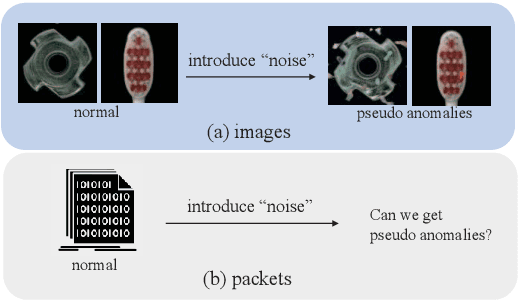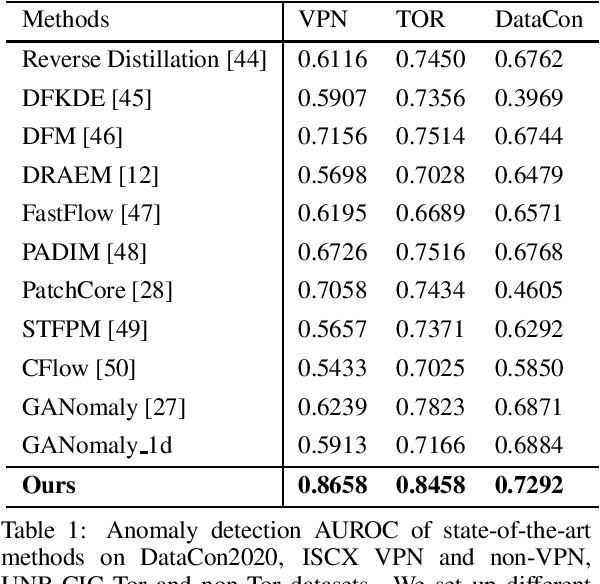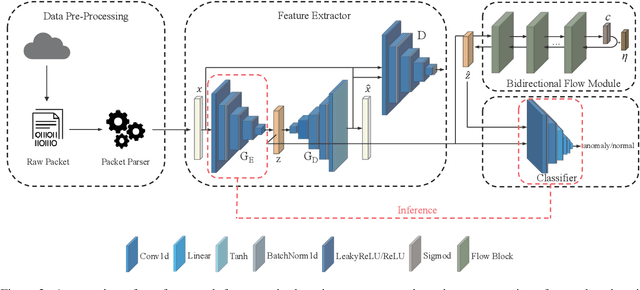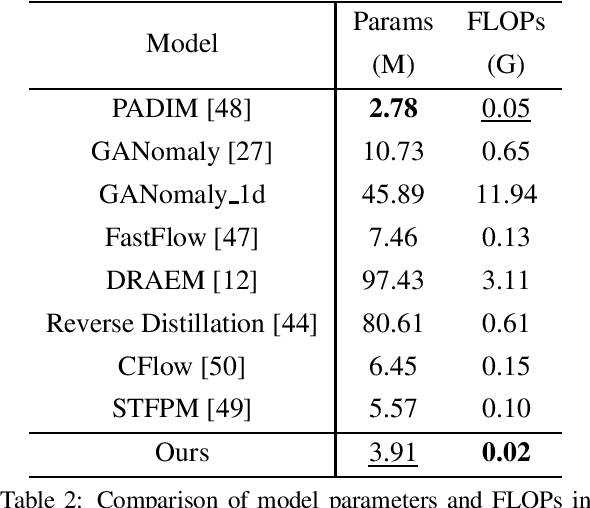Zhangxuan Dang
Semi-Supervised Learning for Anomaly Traffic Detection via Bidirectional Normalizing Flows
Mar 13, 2024



Abstract:With the rapid development of the Internet, various types of anomaly traffic are threatening network security. We consider the problem of anomaly network traffic detection and propose a three-stage anomaly detection framework using only normal traffic. Our framework can generate pseudo anomaly samples without prior knowledge of anomalies to achieve the detection of anomaly data. Firstly, we employ a reconstruction method to learn the deep representation of normal samples. Secondly, these representations are normalized to a standard normal distribution using a bidirectional flow module. To simulate anomaly samples, we add noises to the normalized representations which are then passed through the generation direction of the bidirectional flow module. Finally, a simple classifier is trained to differentiate the normal samples and pseudo anomaly samples in the latent space. During inference, our framework requires only two modules to detect anomalous samples, leading to a considerable reduction in model size. According to the experiments, our method achieves the state of-the-art results on the common benchmarking datasets of anomaly network traffic detection. The code is given in the https://github.com/ZxuanDang/ATD-via-Flows.git
Multi-view Multi-label Anomaly Network Traffic Classification based on MLP-Mixer Neural Network
Nov 08, 2022Abstract:Network traffic classification is the basis of many network security applications and has attracted enough attention in the field of cyberspace security. Existing network traffic classification based on convolutional neural networks (CNNs) often emphasizes local patterns of traffic data while ignoring global information associations. In this paper, we propose a MLP-Mixer based multi-view multi-label neural network for network traffic classification. Compared with the existing CNN-based methods, our method adopts the MLP-Mixer structure, which is more in line with the structure of the packet than the conventional convolution operation. In our method, the packet is divided into the packet header and the packet body, together with the flow features of the packet as input from different views. We utilize a multi-label setting to learn different scenarios simultaneously to improve the classification performance by exploiting the correlations between different scenarios. Taking advantage of the above characteristics, we propose an end-to-end network traffic classification method. We conduct experiments on three public datasets, and the experimental results show that our method can achieve superior performance.
 Add to Chrome
Add to Chrome Add to Firefox
Add to Firefox Add to Edge
Add to Edge